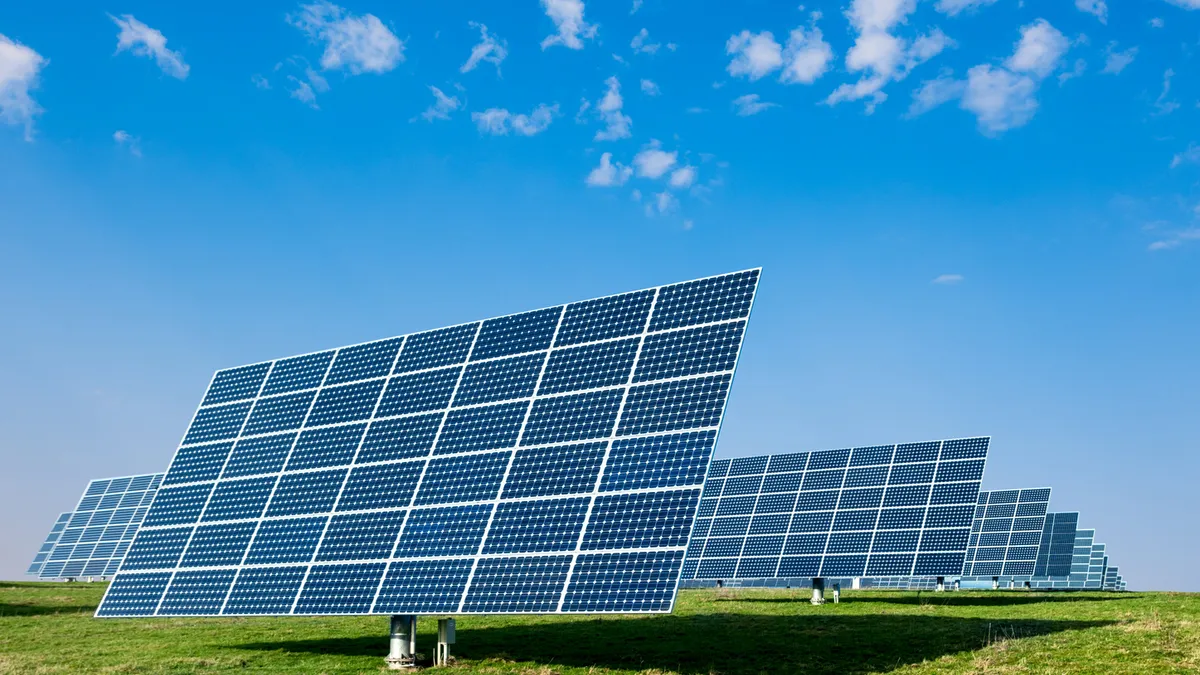Dive Brief:
- A committee on the City Council of Palo Alto, Calif., recommended approval of a 25-year contract this week for its municipal utility to purchase power from a solar PV system at a price of $36.76/MWh, or about 3.7 cents/kWh. The proposed PPA still requires approval from the full Palo Alto City Council.
- Under the proposed deal, the City of Palo Alto Utilities will purchase the power from a 26 MW solar PV facility in Los Angeles County that is owned and operated by developer Hecate Energy. The Wilsona Solar project is expected to begin producing electricity in 2021 and deliver 75,000 MWh of power in its first year of service.
- The proposed PPA would be the cheapest power purchase agreement in the U.S., according to PV Magazine. The Palo Alto PPA comes after Austin Energy and NV Energy both announced they received bids for solar under $40/MWh in 2015.
Dive Insight:
Is solar the least expensive electricity available in the United States? PV Magazine thinks so, writing that the PPA recommended to be approved by the Palo Alto City Council "is the cheapest power purchase agreement" known to its staff.
Recent headlines would seem to support the assertion. Last year, Austin Energy and NV Energy announced they were receiving bids for solar PPAs under $40/MWh, though none as cheap as the $36.76/MWh touted by Palo Alto.
“I have not seen a PPA for 40 years before, or a PPA for under 4 cents,” Mercom Capital CEO Raj Prabhu told PV Magazine.
The length of the contract — at 25 years with options for an extension to 40 — plays into the inexpensive nature of the contract.
“It might make sense for both parties: Very low clean power PPA for the city and a very long-term contract for the vendor which justifies the record low price," Prabhu said.
Declines in the installed price of solar throughout the nation are helping fuel a boom in the generation resource. Last year, the solar industry added 7.3 GW of generation, taking into account both utility-scale and distributed facilities, outpacing growth in natural gas generation.
Growth is expected to continue based on the extension of the key 30% investment tax credit (ITC) for solar generation facilities at the end of 2015. While solar module costs appear to have stabilized, the industry is steadily cutting soft costs, and the tax policy will provide investment certainty for years to come.
"The ITC extension will result in a 20 GW annual solar market in the U.S. by 2020," GTM Research Senior Vice President Shayle Kann told Utility Dive in January. "At that rate, more solar will be installed each year than was added to the grid cumulatively through 2014."
Earlier this month, analysts told Utility Dive that the extension of tax credits for wind and solar installations could help states and utilities reach their Clean Power Plan emissions goals before the beginning of the compliance period, regardless of the recent judicial stay on the regulations set by the Supreme Court. The compliance period was originally set to begin in 2022, but deadlines will likely be set back between one and two years as a result of the stay.
Correction: The original version of this post stated that the Palo Alto PPA was for "$36.76/MWh, or about 37 cents/kWh. That, of course, was incorrect. It should have read 3.7 cents/kWh.














